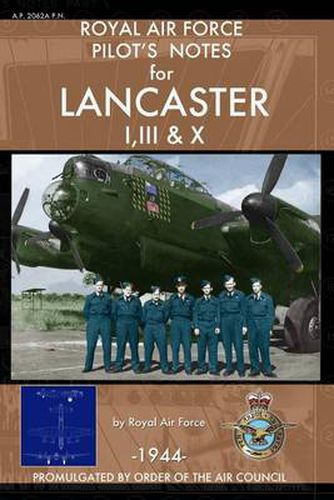Readings Newsletter
Become a Readings Member to make your shopping experience even easier.
Sign in or sign up for free!
You’re not far away from qualifying for FREE standard shipping within Australia
You’ve qualified for FREE standard shipping within Australia
The cart is loading…






This title is printed to order. This book may have been self-published. If so, we cannot guarantee the quality of the content. In the main most books will have gone through the editing process however some may not. We therefore suggest that you be aware of this before ordering this book. If in doubt check either the author or publisher’s details as we are unable to accept any returns unless they are faulty. Please contact us if you have any questions.
Designed by Avro’s Roy Chadwick to replace the Manchester, the Lancaster four-engine bomber became the RAF’s main heavy bomber during WWII. The most successful night bomber of WWII, it flew over 150,000 sorties over occupied Europe and delivered over 600,000 long tons of bombs. The Lanc’s large bomb bay meant that it could carry the largest bombs in RAF inventory including the 12,000 lb blockbuster type called the Tallboy , the Grand Slam 22,000 lb bomb, and (after receiving modifications) the bouncing bombs for the attack on Germany’s Ruhr dams in 1943. The Lancaster carried a crew of seven: pilot, flight engineer, bombardier, radio operator, navigator and two gunners. The all-metal aircraft carried eight machine guns, and had a range of 3,000 miles, a ceiling of 23,500 feet, and a maximum speed of 280 mph.Over 7,300 Lancasters were built from 1941 through 1946. Of this number, 3,249 were lost in action. In addition to service with the R.A.F., Lancs flew for the Canadian and Australian air forces, in the Soviet Union, and after WWII for a variety of air forces worldwide. These pilot’s notes were standard issue for R.A.F. pilots and flight engineers circa 1944. They contain information about aircraft operation, controls, handling, and emergencies.
$9.00 standard shipping within Australia
FREE standard shipping within Australia for orders over $100.00
Express & International shipping calculated at checkout
This title is printed to order. This book may have been self-published. If so, we cannot guarantee the quality of the content. In the main most books will have gone through the editing process however some may not. We therefore suggest that you be aware of this before ordering this book. If in doubt check either the author or publisher’s details as we are unable to accept any returns unless they are faulty. Please contact us if you have any questions.
Designed by Avro’s Roy Chadwick to replace the Manchester, the Lancaster four-engine bomber became the RAF’s main heavy bomber during WWII. The most successful night bomber of WWII, it flew over 150,000 sorties over occupied Europe and delivered over 600,000 long tons of bombs. The Lanc’s large bomb bay meant that it could carry the largest bombs in RAF inventory including the 12,000 lb blockbuster type called the Tallboy , the Grand Slam 22,000 lb bomb, and (after receiving modifications) the bouncing bombs for the attack on Germany’s Ruhr dams in 1943. The Lancaster carried a crew of seven: pilot, flight engineer, bombardier, radio operator, navigator and two gunners. The all-metal aircraft carried eight machine guns, and had a range of 3,000 miles, a ceiling of 23,500 feet, and a maximum speed of 280 mph.Over 7,300 Lancasters were built from 1941 through 1946. Of this number, 3,249 were lost in action. In addition to service with the R.A.F., Lancs flew for the Canadian and Australian air forces, in the Soviet Union, and after WWII for a variety of air forces worldwide. These pilot’s notes were standard issue for R.A.F. pilots and flight engineers circa 1944. They contain information about aircraft operation, controls, handling, and emergencies.